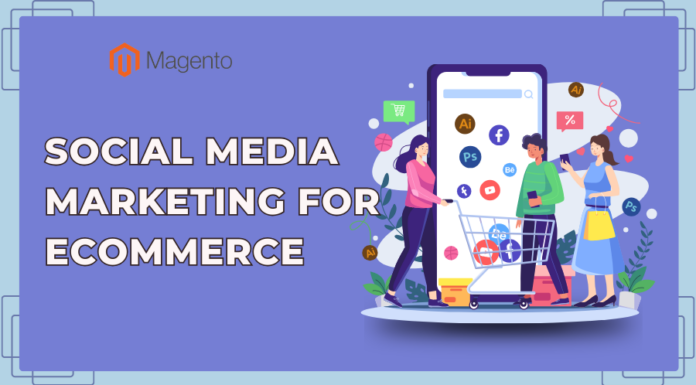
Online marketing business is growing energetically, and the demands of the customers are increasing day by day, so changing the marketing strategy and updating it is required on daily basis. All products and platforms have emerged on the market, and people are choosing different ways of getting into the business.
Amazon is a well-known platform for eCommerce marketers and business owners. People are now working as Amazon virtual assistants as well as are selling Amazon Private Label products to the customers, generating their revenue through these mediums.
Customers work as a fuel for all kinds of businesses, and when it comes to eCommerce business, customers act as the focal point of the business. All the efforts are made for the approval and satisfaction of the customers. Not all customers have the same preferences, so a single business marketing strategy does not apply to all customers. Business owners need to have diversity in their marketing strategy so that it can cover all kinds of the potential audience.
Customer Segmentation is a technique that breaks up customers and divides them under different categories according to; who they are, and what they want. Customer segmentation helps businessmen devise a marketing strategy that works better for that particular type of customer, and this can be a very good technique to generate traffic. Segmenting customers means categorizing identical customers into smaller groups. In this way, people with shared interests are put together. Now you can generate a plan for each of the groups according to their preferences and interests.
Now the question is, what ways should an eCommerce businessman adopt to include customer segmentation in his personalized eCommerce business marketing strategy? Well here are 5 easy steps that will help you solve this question.
Explore: Magento 2 Customer Segment
Table of Contents
5 Customer Segmentation Tips

1. Understand the Models You Can Use To Segment Your Customers
Understanding the basic techniques that you will be implementing on the segmentation of your ideal customers is one of the most important points. So, you should take care of it at the very start of your marketing strategy.
When talking about the models of segregation or segmentation of customers, there are seven chief models that you should consider:
- Demographic Segmentation: Demographics give you information about the personals of your customers like; gender, age, education, language, social status, income, socioeconomic status, and marital status, etc.
- Geographic Segmentation: It gives you information about the geographical location information of your customers like; town, city, state, country, continent, etc.
- Psychographic Segmentation: Psychographics informs you about the attitudes, beliefs, perspectives, interests, lifestyles, and personalities of customers.
- Technographic Segmentation: It gives you information about the technology your customers are using to get access to you. Technographic includes; apps, software, desktop, and mobiles.
- Behavioural Segmentation: It allows you to segregate people based on their behaviour, habits, actions, towards different products, their usage, and pricing, etc.
- Needs-Based Segmentation: It tells about the needs of the customers and what features your products must-have to come up to those needs.
- Values-Based Segmentation: It tells about the economic worth of potential customers to the business.
A segmentation model based on all these seven segregation models is a successful one!
2. Define Your Customer Segmentation Goals
Customer Segmentation goals must be defined based on why you need this segregation and what benefits will it bring to your business strategy as well as its role in the growth of your business. When writing down your goal you need to include all these factors in your business strategy to make it a functional one.
Here is an overview of the reasons, for which business owners include customer segmentation in their business marketing strategy:
- Increasing the trust of the people which they put in the brand and the products
- Featuring new predictions for the productivity and the effectiveness of the products and the brand on the whole
- Steering the marketing and promotional campaigns on the right kind of audience
- Communicating with the customers through the most efficient platforms
- Replying to customers queries n time, and sending emails based on the segregation model
- Promoting relevant content to the customers. In other words customer, the specific promotional method should be used
3. Set Principles around Collecting and Sorting Your Data
Data is something that everybody can gather, as there are numerous sources, but genius is the one who knows how to analyze the data and use it for his or her benefit. Otherwise, there is no use of it, as data analysis is one of the building blocks of the eCommerce business.
Collection and sorting data are very crucial, and in customer segmentation, you must do it in such a way that it helps you in the long run, otherwise you will have to segregate the data again and again according to the potential customers and customers.
4. Recognize What Special Things you can Do To Keep Them Engaged
When you have organized your customer segmentation strategy and filtered your customers according to it the next step is to keep the customers engaged by doing some special things for them. Now what are those special things and what customers should you engage to grow the traffic on your business?
Do you know what does high spenders means, and who they are? Well, high spenders mean the main reason behind the revenue generation. And high spenders are those ideal customers who either shop in large amounts or order something very expensive. Keeping high spenders engaged is your main target.
Engage customers by giving them free gifts, orders nicely packaged VIP memberships, Premium brand products, free shipping, and early access to your new items, etc.
5. Don’t Confuse Segmentation With Anti-Personalization
Segmentation and personalization are not opponents, as they are thought of by most people. One brings you to the other. Segmentation is the initiation of the process and you will face personalization in the process, or at the end of the process. Personalization is actually the refinement of segmentation, and nothing less.
Summary
Marketing is fast-paced these days, and you need to follow the latest updates to keep up with the speed. However small or large your business is, you should follow the newest and modernized upgrades for the growth of your business, and customer segmentation is one such upgrade. Segmentation is the right instrument for eCommerce marketing campaigns, and one must not overlook it!
Related Topics
- Tips on How to Reduce and Recover Abandoned Carts in Magento 2 Stores
- 5 Easy Tips To Optimize Performance of Your Magento Ecommerce Store
- 6 Actionable Tips To Increase Magento Store Sales
- Tips to Convert Guest to Customer for eCommerce Site
- The Ultimate Tips for Cross-Selling on Magento 2
- Top 8+ Magento SEO Tips and Tricks For Sale Boosting 2020
- Amazing tips to win customers through Product Pages in Magento 2











![[SALE OFF] Discount 30% All Premium Extensions On Christmas And New Year 2025 christmas-and-new-year-2025](https://landofcoder.b-cdn.net/wp-content/uploads/2024/12/christmas-and-new-year-2025-1-218x150.png)






